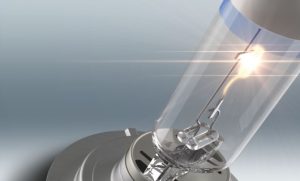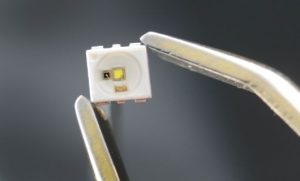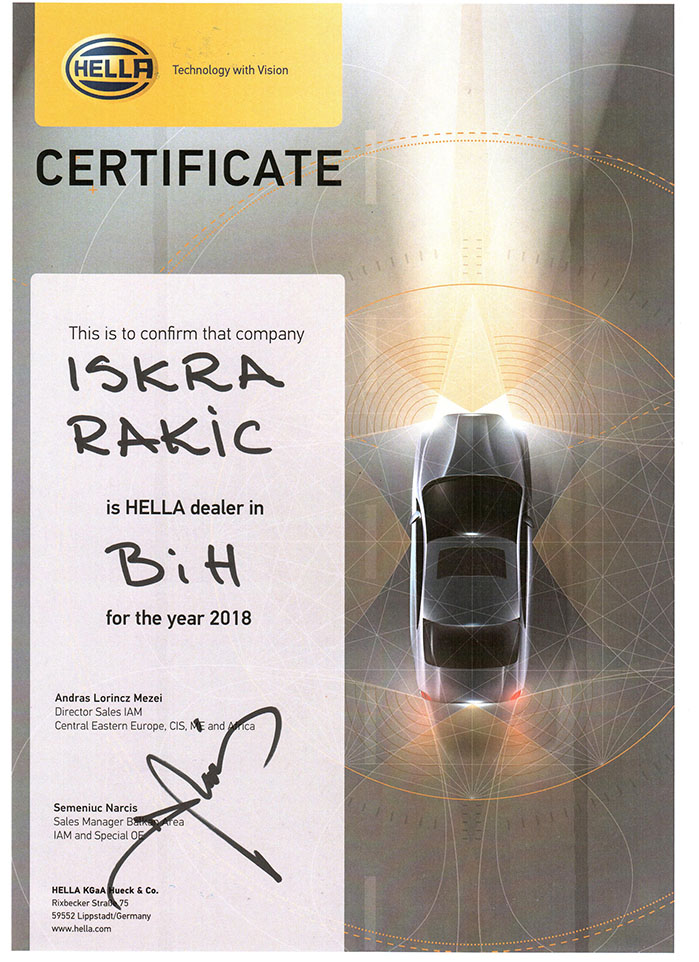Hella
Headlamps
Driving comfort and safety
Fifty percent of all drivers feel stressed in poor visibility conditions. The strain eases if the road ahead is well lit; good lighting is the best night vision system. Ever since cars were invented, HELLA has been setting innovation milestones and pursuing a forward-looking approach to lighting products and systems. We focus on enhancing both driving comfort and safety, plus the attractive design of HELLA lighting products lets manufacturers achieve specific vehicle designs and positioning strategies. Find out more about our range of lighting products and individual product segments.
 Halogen light sources have been used for vehicle lights and in both reflection and projection systems for all other major automotive lighting functions since the early 1960s. Halogen bulbs last longer than simple filament bulbs and are more efficient. Each one contains a tungsten filament, like a normal light bulb, but the gas inside the bulb is a special halogen mixture. This mixture combines with tungsten atoms as they evaporate from the glowing filament and redeposits those atoms on the filament rather than on the inside of the bulb itself, ensuring optimum light emission. The temperature of the filament inside a halogen lamp is higher, and so is the amount of light emitted. In addition to halogen reflection systems, headlamps using a bi-halogen projection system are also used in vehicles. These types of lights can produce both high and low beams with just one projection module, mechanically switching back and forth via a shutter. In the higher position, the shutter creates the specific cut-off line for the low beam lights. When it is lowered, the high beam is released.
Halogen light sources have been used for vehicle lights and in both reflection and projection systems for all other major automotive lighting functions since the early 1960s. Halogen bulbs last longer than simple filament bulbs and are more efficient. Each one contains a tungsten filament, like a normal light bulb, but the gas inside the bulb is a special halogen mixture. This mixture combines with tungsten atoms as they evaporate from the glowing filament and redeposits those atoms on the filament rather than on the inside of the bulb itself, ensuring optimum light emission. The temperature of the filament inside a halogen lamp is higher, and so is the amount of light emitted. In addition to halogen reflection systems, headlamps using a bi-halogen projection system are also used in vehicles. These types of lights can produce both high and low beams with just one projection module, mechanically switching back and forth via a shutter. In the higher position, the shutter creates the specific cut-off line for the low beam lights. When it is lowered, the high beam is released. Xenon headlamps help save lives. If all of the vehicles on German roads were equipped with xenon headlamps, the number of accidents occurring at night would be reduced by an estimated 50%, and traffic fatalities during the same period would decrease by 18%.[1] Despite the striking benefits of xenon headlamps, more than half of all Germans are not adequately informed about this type of head-lamp system, and almost as many cannot name even one of the benefits of xenon head-lamps. This stands in stark contrast to the high levels of owner satisfaction with vehicles equipped with this type of system (96%).[2] Xenon headlamps generate light based on the principle of gas discharge. The high voltage required to ignite the xenon gas – 20,000 volts – is generated by an electronic ballast.
Xenon headlamps help save lives. If all of the vehicles on German roads were equipped with xenon headlamps, the number of accidents occurring at night would be reduced by an estimated 50%, and traffic fatalities during the same period would decrease by 18%.[1] Despite the striking benefits of xenon headlamps, more than half of all Germans are not adequately informed about this type of head-lamp system, and almost as many cannot name even one of the benefits of xenon head-lamps. This stands in stark contrast to the high levels of owner satisfaction with vehicles equipped with this type of system (96%).[2] Xenon headlamps generate light based on the principle of gas discharge. The high voltage required to ignite the xenon gas – 20,000 volts – is generated by an electronic ballast.
In bi-xenon headlamps, the low beam and high beam lights are generated with just one projection module, which is mechanically switched between low and high beams via a shutter in the headlamp. Since the light retains its color and intensity, the human eye perceives the illumination as unchanged. Compared to a halogen low beam, a xenon low beam is characterized by a brighter and more widely illuminated road. The range of the high beam is much greater, and the edges of the road are illuminated more clearly.
With xenon headlamps, the automatic or dynamic headlamp leveling systems always ensure correct beam settings depending on the load, the braking process and/or vehicle acceleration. The vehicle load status is measured by inductive or magnetoresistive axle sensors, and head-lamps are repositioned using servomotors. With dynamic headlamp leveling, the vehicle speed is processed via the speedometer signal. This means that the lamps can quickly compensate for braking and acceleration processes.
The complete xenon system also includes a power wash system that keeps the headlamp cover lens clean so that the xenon light is directed onto the road and drivers of oncoming vehicles do not have to contend with added glare.
Dynamic bend lighting was introduced in 2003 to provide drivers with an improved, larger visibility range. In this system, light modules rotate according to the steering angle. The next stage in development of advanced headlamp systems came in 2005, with the introduction of the Adaptive Frontlighting System (AFS). Based on the VarioX module, headlamp light distribution is adapted to the specific situation according to the vehicle’s speed and steering angle. Then, in 2009, a new breakthrough was achieved: For the first time ever, a headlamp system was combined with a camera as a sensor, allowing the combined unit to rely on data collected from the vehicle’s surroundings alongside data from the vehicle itself. When the adaptive cut-off line (aCOL) is generated in this way, the light cone of the vehicle’s headlamps is controlled so that it ends in front of the other vehicles. Today’s state-of-the-art glare-free high beam systems go one step further, automatically masking areas of the road where lighting could annoy other drivers.
 As a groundbreaking innovation in the field of automotive lighting, LED headlamps mark the current high point of the rapid development process traced by LED technology ever since the first LED automotive lighting functions were introduced, in the form of the center high mounted stop lamp, in the early 1990s.
Reasons for this development are the potentials which the LED has. As it delivers not only environmental benefits, it also enhances the driving comfort with its light colour similar to daylight. Furthermore, the light source also offers a great deal of styling potential, and can help manufacturers create a distinctive image for their brands.
Responsible for the light generation in a LED is a semiconductor crystal that emits light when it is electrically stimulated. As in the conventional light sources, the light distribution can also be generated by using reflection or projection systems. The challenge for both systems includes achieving a good thermal management. The LED chip has to be highly effective in dissipating the power lost by the LEDs and discharging it to the system’s surroundings.
Meanwhile, LED headlamps are not only available for premium vehicles. They increasingly enter mid-size models as well. Whereas, the main lighting functions low beam and high beam are realized with LED in the mid-size models, in the upper class models adaptive systems are increasingly come up. Thus far, LED based systems are available with AFS functionality as well as camera based functions, like the glare-free high beam.
As a groundbreaking innovation in the field of automotive lighting, LED headlamps mark the current high point of the rapid development process traced by LED technology ever since the first LED automotive lighting functions were introduced, in the form of the center high mounted stop lamp, in the early 1990s.
Reasons for this development are the potentials which the LED has. As it delivers not only environmental benefits, it also enhances the driving comfort with its light colour similar to daylight. Furthermore, the light source also offers a great deal of styling potential, and can help manufacturers create a distinctive image for their brands.
Responsible for the light generation in a LED is a semiconductor crystal that emits light when it is electrically stimulated. As in the conventional light sources, the light distribution can also be generated by using reflection or projection systems. The challenge for both systems includes achieving a good thermal management. The LED chip has to be highly effective in dissipating the power lost by the LEDs and discharging it to the system’s surroundings.
Meanwhile, LED headlamps are not only available for premium vehicles. They increasingly enter mid-size models as well. Whereas, the main lighting functions low beam and high beam are realized with LED in the mid-size models, in the upper class models adaptive systems are increasingly come up. Thus far, LED based systems are available with AFS functionality as well as camera based functions, like the glare-free high beam.
